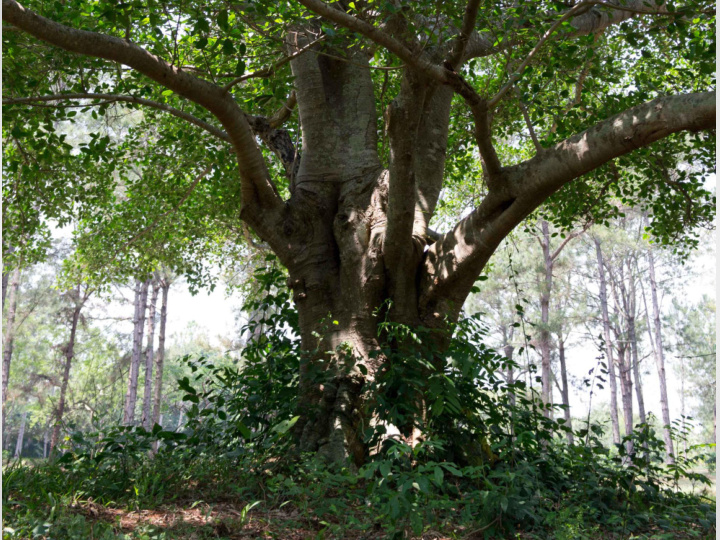



Factors predicting connection to nature Misha Voloaca Supervisor: Veronika Huta University of Ottawa
Overview • Connection to nature? • Trends • Qualitative study – highly connected • Quantitative study – general public
What is connection to nature? • thoughts, feelings, & experiences people have with nature • Sample items: My relationship to nature is an important part of who I am Humans have a right to use natural resources in any way we want (R) I enjoy being outdoors, even in unpleasant weather (Nisbet, Zelenski, & Murphy, 2009)
Why is it important? “We abuse land because we regard it as a commodity belonging to us. When we see land as a community to which we belong, we may begin to use it with love and respect.” – Aldo Leopold (1887-1948) Well-being (Wolsko & Lindberg, 2013) • Flourishing .27*** • Vitality .32*** • Positive emotions .25*** • Negative emotions -.23** • Mindfulness .16* Pro-environmental behavior (Mayer & Frantz, 2004) • Ecological behaviour .45*** • Consumerism - .36**
Study 1 – Semi-structured interview 23 participants, 22.3 years old ( SD = 9.93, 18-50), 18 women • Activities ( 96% ) – being in nature, outdoor sports, gardening, camping • Influential others ( 65% ) – parents, grandparents, siblings, friends, teachers • Geographical location ( 43% ) countryside/rural, cottage, nature near home • Self-transcendence ( 30% ) • Education ( 30% ) • Attachment to animals ( 30% )
• Most important influence o Influential others 35% o Being in nature 13% o Psychological benefits 13% o Geographic location 9% o Self-transcendence 9% o Experiencing pollution 4% o School curriculum 4% o Having pets 4% • Novel finding: hallucinogenic drugs 17%
Study 2 – Online survey • 360 participants, 19.7 years old ( SD = 3.2, 17- 48), 288 female • “How experiences growing up have contributed to your identity” • Influence of other people, frequency of activities, play, education • Nature Relatedness Scale (Nisbett, Zelenski, & Murphy, 2009)
Significant others (12 and under) • Mother .22** • Father .20** • Siblings women .23** , men .02 • Grandparents .17** • Teachers women .20** , men .16 • Friends women .20** , men -.05 • Others women .24** , men .01
Playing (12 and under) • Woods .32** • Lake/pond women .26** , men .12 • Overgrown field .20** • Farm field/pasture .31** • Creek/stream .31** • My yard women .19** , men .06 • Indoors -.23** • Street, alley, playground ~ .02
Activities (12 and under) • Gardening women .38** , men .18 • Camping .32** • Hikes/nature walks .42** • Use cottage women .21** , men .16 • Picnics women .29** , men .06 • Visit national parks women .28** , men .00 • Outdoor sports women .18** , men .10 • Swimming .14**
Education (under 12) • 1-day outdoor ed/field trips .08 • Multi-day outdoor ed women .14* , men -.09 • Nature museums women .13* , men .12 • Zoos women .16**, men -.14 • Read books women .18** , men .16 • Browse env. websites women .15* , men .03 • TV/documentaries women .30** , men .10 • Plants inside home women .14* , men .13
Geography (12 and younger) • Farm women .14*, men .11 • Rural .11* • Small city -.08 • Large city (centre) - .05 • Large city (suburbs) -.17**
Did you have a special place where you spent time alone in nature? No M = 3.33, SD = .60 Yes M = 3.68, SD = .53 t(345) = 5.71, p = .000 Did you have any pets before age 12? No M = 3.30, SD = .61 Yes M = 3.56, SD = .57 t(354) = 3.74, p = .000 Have you ever had any drug experiences that have made you feel closer to nature? Men Women No M = 3.23, SD = .62 M = 3.51, SD = .56 Yes M = 3.29, SD = .65 M = 3.87, SD = .65 t(59) = .314, p = .76 t(243) = 2.91, p < .01
Most important factor • Hiking 14% • Camping 13% • Cottage 8% • Destruction of nature 6% • Animals 5% • Swimming 4% • Farm 3% • Documentaries 3% • Outdoor sports, exercise 3% • Lifelong feeling 2% • Living close to nature 2 %
Age of most important experience
References • Mayer, F. S., Frantz, C. M., Bruehlman-Senecal, E., & Dolliver, K. (2009). Why is nature beneficial? The role of connectedness to nature. Environment and Behavior, 41 (5), 607- 643. • Nisbet, E. K. L., Zelenski, J. M., & Murphy, S. A. (2009). The Nature Relatedness Scale: Linking individuals’ connection with nature to environmental concern and behavior. Environment and Behavior, 41 , 715-740. • Wolsko, C., & Lindberg, K. (2013). Experiencing connection with nature: The matrix of psychological well-being, mindfulness, and outdoor recreation. Ecopsychology, 5(2), 80-91.
Recommend
More recommend